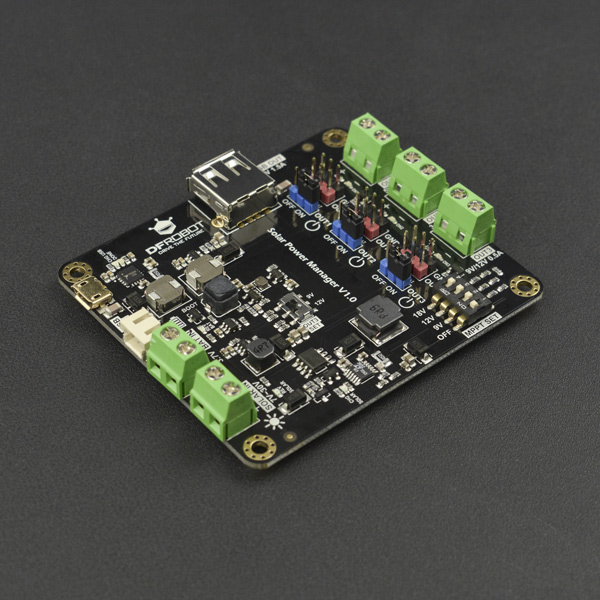Solar Power Manager Series
Introduction
The DFRobot Solar Power Manager series are designed for IoT and renewable energy projects, providing safe and high-efficiency embedded solar power management modules for makers and application engineers. All modules in this series have MPPT (Maximum Power Point Tracking) to maximize solar energy conversion efficiency under various sunlight. A complete battery and power protection provides reliable power management for different types of solar projects.
Selection Guide
| Name | Solar Power Manager 1.0V ★ | Solar Power Manager 5V V1.1 | Solar Power Manager Micro V1.0 | Solar Power Manager For 12V Lead-Acid Battery V1.0 |
|---|---|---|---|---|
| SKU | DFR0535 | DFR0559 | DFR0579 | DFR0580 |
| Solar Power Management IC | LTC3652 | CN3065 | SPV1050 | CN3767 |
| Solar Input Voltage | 7V ~ 30V | 4.4V ~ 6V | 0.5V ~ 4V | 15V ~ 25V |
| Maximum Charge Current (Solar) | 2A (Solar/USB) | 900mA (Solar/USB) | 70mA (Solar)/100mA (USB) | 4A (Solar) |
| Topology | DC-DC Buck | Linear Regulator | DC-DC Boost | DC-DC Buck |
| Battery | 3.7V Lithium Battery | 3.7V Lithium Battery | 3.7V Lithium Battery | 12V Lead-Acid Battery |
| MPPT | 9V/12V/18V Optional | Fixed 5V | 75% Open Voltage | Fixed 18V |
| Battery Protections | Over Charge/Over Discharge/Over Current/Reverse Connection Protections | Over Charge/Over Discharge/Over Current/Reverse Connection Protections | Over Charge/Over Discharge/Reverse Connection Protections | Over Charge/Over Discharge/Reverse Connection Protections |
| Output Protections | Short Circuit/Over Current/Over Heat Protections | Short Circuit/Over Current Protections | Short Circuit/Over Current Protections | Short Circuit/Over Current/Over Heat Protections |
| USB Charge IN | Yes | Yes | Yes | No |
| USB OUT | 5V 1.5A | 5V 1A | No | 5V 2.5A X2 |
| Regulated OUT | Three Regulated Outputs 3.3V 1A;5V 1.5V;9V/12V 0.5A |
One Regulated Output 5V 1A |
One Regulated Output 3.3V 90mA |
Two Outputs 5V 5A; 12V 8A |
| Dimension | 78.0mm×68.0mm | 33.0mm×63.0mm | 30.0mm×30.0mm | 68.0mm×68.0mm |
| Features | A complete multifunction solar power management module. Applications: Small Solar Street Lamp, Solar Powered Robots For 9V/12V/18V Solar Panels within 20W |
A small and easy-to-use 5V solar power management module. Applications: Solar Power Bank, Solar Environment Monitors For 5V Solar Panels within 10W |
A micro power solar power management module for low-power sensors and controllers. Applications: Wireless Sensor Network, BLE iBecon For 1V/2V/3V Solar Panels within 0.5W |
Medium power solar management module for 12V lead-acid batteries. Applications: Street lighting, intelligent agriculture, environmental monitoring station For 18V Solar Panels within 100W |
Introduction
Solar Power Manager is a complete small power and high-efficiency solar power management module. It features as MPPT (Maximum Power Point Tracking) function, maximizing the efficiency of the solar panel. Apart from serving as a solar charger, the module can provide up to 2A charging current to 3.7V Li battery with AC adapter (within 30V) or USB charger, three individual ON/OFF controllable DC-DC converters with 5V 1.5A, 3.3V 1A and 9V/12V 0.5A outputs. These features satisfy the needs of various solar power projects and low-power applications. The module also employs various protection functions, such as Li battery protection, battery/solar panel reverse connection protection, output over temperature and over current/short circuit protection, which greatly improves the stability and safety of the system.
Features
- Constant Voltage MPPT Algorithm, Maximizing Solar Panel Efficiency
- 7V~30V Wide Solar Panel Input Voltage
- Various Charging Mode: Solar/AC Adapter/USB Charger (2A Max Charge Current)
- Three Individual ON/OFF Controllable Regulated Power Supply for Low-Power Applications
- All Multi-Layer Ceramic Capacitors (MLCC), Safe, Stable and High-Efficiency
- Various Protection Functions
- USB Connector with ESD Shell
Specifications
- Solar Power Management IC: LTC3652
- Solar Input Voltage (SOLAR IN):7V~30V
- Battery Input (BAT IN): 3.7V Li-Polymer/Li-ion Battery
- Charge Current (USB/SOLAR IN): 2A Max Trickle Charging, Constant Current, Constant Voltage Three Phases Charging
- Charge Cutoff Voltage (USB/SOLAR IN): 4.2V±1%
- MPPT Setting Voltages:OFF/9V/12V/18V
- USB IN Voltage:5V
- Regulated Power Supply:OUT1=5V 1.5A; OUT2=3.3V 1A; OUT3=9V/12V 0.5A
- Regulated Power Supply Efficiency (3.7V battery IN)
- OUT1: 90%@10%Load, 86%@50%Load, 80%@90%Load
- OUT2: 96%@10%Load;92%@50%Load;87%@90%Load
- OUT3 (9V OUT): 88%@10%Load, 89%@50%Load, 86%@90%Load
- OUT3 (12V OUT): 87%@10%Load, 88%@50%Load, 82%@90%Load
- USB Charge Efficiency: 84%@1A;74%@1.8A
- Solar Charge Efficiency (18V SOLAR IN):78%@1A;72%@1.8A
- Maximum Quiescent Current:
- Overall: <3 mA
- OUT1: <760 uA
- OUT2: <560 uA
- OUT3: <1.72 mA
- Protections
- BAT IN: Over Charge Voltage (4.3V)/Over Discharge Voltage (2.4V) /Over Current (3A) /Reverse Connection Protection
- OUT1-OUT3/USB OUT: Short Circuit/Over Current/Over Heat Protection
- SOLAR IN: Backflow/Reverse Connection Protection
- Operation Temperature:-40℃~85℃
- Dimension:78.0mm*68.0mm
Applications
- Smart Solar Environment Monitor System
- Solar Powered Robot
- Small Solar Street Lamp
- Solar Power Bank
Board Overview

Quick Start
Build a solar powered system
- Connect the Li battery to BAT IN.
- Connect the solar panel to SOLAR IN.
- Connect USB OUT of the module to Arduino with USB cable.
- Switch one bit of the MPPT SET to ON (others remain OFF) according to the nominal (maximum power point) voltage of the solar panel.
- Connect USB OUT of the module to Arduino with USB cable.
- Connect all the VCC and GND pins of the peripherals to the regulated power supply headers or terminals according to the nominal voltage.
- Press the BOOT bottom for once to activate the the Li battery protection IC.
Attention
If a 10W (or above) solar panel is used, the LTC3652 may run in full load, trying to charge the battery at maximum 2A. In order to improve the cooling of the IC, it is highly recommended to attach the thermal conductive silicone pad and Aluminum cooling fin (included in the kit) to the bottom of the module where the label "Cooling Fin" is located.

Detailed Description
Maximum Power Point Tracking, MPPT
The MPPT (Maximum Power Point Tracking) can ensure the solar panel output power maintains at its maximum under different loads and sunlight, maximizing the conversion efficiency. We can identify the short circuit current ISC and the open circuit voltage VOC from the cross points of the I/V curve (green) with x and y axis respectively. The ISC and VOC grow larger with the illumination increasing. With the output voltage VPANEL growing, the output current IPANEL gradually decreases and then jumps down after crosses a special point VMP, the maximum power voltage. By multiplying the voltage and current, which obviously results in power, and take the output voltage as the x axis, we obtain the P/V curve (blue). The output power PPANEL reaches its peak when the output voltage is at VMP. Although the maximum power increases with illumination, the VMP changes little. Therefore, we may approximately take the VMP as a constant for a specific solar panel under different illumination.

Inspired by the observation above, the LTC3652 solar power management IC (employed by this module) maximizes the output power by keeping the output voltage at the vicinity of VMP, which is also called constant voltage MPPT algorithm. Benefited from this feature, the module has a better conversion efficiency compared to common solar battery charger.
Charging Cycle
The module safely and quickly charges lithium battery through three phases: trickle charge, constant current charge, constant voltage charge.
- Trickle charge: Since the internal resistance of the lithium battery becomes high when the voltage is low, it is not a good manner to charge with large current at the beginning. Otherwise, the battery temperature rises and the battery life is lowered. When the battery voltage is lower than the trickle charge threshold voltage of 2.94V, the module enters the trickle charge phase, charging the battery at 15% of the maximum charge current up to 300mA, until the battery voltage is higher than 2.94V.
- Constant current charge: When the battery voltage is higher than 2.94V, the module enters the constant current charging phase, and the battery is charged with a constant current up to 2A. During the phases of trickle and constant current charge, the SOLAR CHG red LED turns ON.
- Constant voltage charge: When the battery voltage is closing to the charge cut-off voltage of 4.2V, the module enters the constant voltage charge phase. The module continues to charge the battery with a constant voltage, and the charging current gradually decreases. When the charging current drops to 10% of the maximum charging current of 200mA, the charging ends. The SOLAR CHG red LED turns OFF.
- Automatic recharge: If the battery is fully charged, the module input source (SOLAR IN) not powered off and the battery voltage decreases due to self-discharge or load, when the battery voltage drops below 4.1V, a new charging cycle will automatically begin.
.png)
Solar Panel Selection
Users can plug in any kinds of solar panel (monocrystal, polycrystal, thin flim) as long as the open circuit voltage within 7V~30V. Taking the size, weight, price of the panel and the 2A maximum charge current of the module all these factors into consideration, it is recommended to connect a solar panel with no more than 20W to the SOLAR IN terminal.
Warning
The input voltage of SOLAR IN SHOULD NOT exceed 30V, or the module may be permanently damaged.
MPPT SET
MPPT SET provides quick setting of the MPPT voltage. Three commonly used solar panel voltage 9V, 12V and 18V are available. Switch one bit of the 4P DIP switch (others remains OFF) according to the norminal voltage of the panel. To disable the MPPT function, switch the last bit (the OFF bit, label No. 1) to ON. This bit has the top priority. Once it is at ON, the MPPT function will be disabled no matter the status of other bits. By disabling MPPT function, The SOLAR IN becomes a buck type DC-DC Li battery charger.
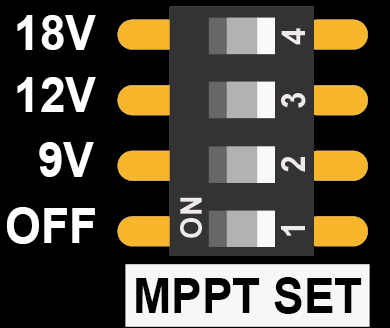
Attention
If the sunlight is too weak, the open circuit voltage of the panel may be below the MPPT voltage. The SOLAR IN can not charge the battery under such condition, but users can still turn off the MPPT function to continue charging the battery with small current.
Battery Selection
The battery input BAT IN provides two connectors JST PH2.0 and KF301 5.08mm 2P terminal, which directly connect each other internally. Usually, connect one 3.7V Li-polymer/Li-ion battery (4.2V when fully charged) to one of the connectors. The maximum charge current can be up to 2A for USB IN or SOLAR IN. Safety issue may arise if the charging current exceeds the nominal charge current of the battery, which is often determined by the capacity and charge rate of a battery. The maximum allowable charge current of a battery can be calculated with the equation: Maximum charge current(mA) = Capacity(mAH) * Charge rate(C). Use this equation to check whether the battery is suitable. For commonly used 1C (charge rate) Li battery, the capacity should be at less 2000mAh. For higher charge rate battery, smaller capacity can be used. Some Li batteries are packed with battery protection circuit to automatically limit the charge/discharge current. For such batteries, users are free of worrying about the charge current issue stated above.
Warning
DO NOT use nonchargeable battery or chargeable battery not described above.
USB Charge Requirement
The USB IN is only used for battery charging. It is recommended to use a 5V 2A AC adapter for battery charging. Lower capacity adapter, such as 5V 1A, may increase the charging period.

USB/SOLAR IN Automatic Switching
Both the USB IN and SOLAR IN are capable of deliver 2A max charge current. To prevent charge conflict caused by using both inputs, the USB charge has a higher priority. When the USB IN is powered on by AC adapter, the SOLAR IN will be automatically cut off. When the USB IN is powered down, the SOLAR IN resumes charging.
Regulated Power Supply
The module provides three individual regulated outputs OUT1/USB OUT=5V 1.5A, OUT2=3.3V 1A, OUT3=9V/12V 0.5A. Output voltage of OUT3 can be set as 9V or 12V through the switch OUT3 SET. OUT1 and USB OUT share the same output voltage and maximum current, but USB OUT CAN NOT be shutdown.
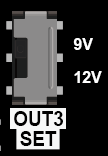
Most of the power banks available on the market has the automatic shutdown function to reduce the quiescent power under light loads. However, the automatic shutdown threshold is usually higher than many low power controllers, some even higher than the classical Arduino UNO (around 50mA). Such power banks will automatically shut itself down when the output current continues lower than some preset threshold after several seconds, which fails to apply to low power applications. The USB OUT employs the low quiescent power DC-DC boost converter and always remains ON to provide continuous power to low power controller.
Except from USB OUT, the OUT1-OUT3 can be turned ON/OFF by all 3.3V and 5V controllers (such as Arduino, FireBeetle or Raspberry Pi etc.). Pull out the jumper on the blue header, the corresponding output will be shutdown (LED indicator ON turns dark). Connect any IO and GND pin of the controller to the EN and GND pin of the module respectively. When the IO pin is driven HIGH, the regulated output turns on. When driven LOW, the output turns OFF. This function is extremely useful in low power application. For example, connect all VCC and GND pins of the peripherals (sensors or other modules) to the OUT1 and GND1 pins. Turn on OUT1 and read all the data from the sensors. Turn off OUT1 and put the controller into sleep mode for example 1s until next wake up. By cycling the system into such discontinuous (or pulse) operation pattern, the average power consumption can be greatly reduced. Average power consumption and data acquisition interval are the trade off under such situation.
Attention
Turn off OUT1 5V output will not turn off USB OUT 5V output, which CAN NOT be shutdown. The total output power of USB OUT and OUT1 should not exceed 5V*1.5A=7.5W.
When OUT1 and OUT3 are turned ON, the corresponding GND1 and GND3 will be connected to the system ground GND. When they are turned OFF, GND1 and GND3 become floating (disconnected from GND).

LED Indicators
There are three types of LED indicators indicating the operation status of different parts of the module:
- Reverse connection LED indicators: when the battery or solar panel are reverse connected at the BAT IN or SOLAR IN, the corresponding orange LEDs REV BAT or REV SOLAR turn ON, informing the user a reverse connection error.


- Charge LED indicators: when using the USB IN to charge the battery, the CHG USB LED (red) turns ON. If the battery is fully charged, the CHG USB LED turns OFF and the DONE LED (green) turn ON.The DONE is only used to indicate whether the battery is fully charged or not with USB IN and does not apply to SOALR IN. If no battery is connected, both LEDs turn ON. When using the SOLAR IN to charge the battery, CHG SOLAR (red) turn ON. This LED will be turned off when the battery is fully charge, and flash when no battery is connected to BAT IN. If the sunlight is too weak, the circuit may fail to charge the battery with solar panel. The CHG SOLAR turns OFF. It should be noted that when changing the battery with SOLAR IN and discharging it on regulated output OUT at the same time, CHG SOLAR will be ALWAYS ON, no matter the battery is fully charged or not. Use the analog input to read whether the battery voltage is close to 4.2V to determine whether the battery is fully charged under such situation.


Attention
When the MPPT function is turned on or off, the CHG SOLAR solar charge indicator will perform differently.
When the MPPT function is turned on, CHG SOLAR does not light up if the battery charge current is less than 250mA. Although the battery is still being charged with a small current, it means that the solar panel is under weak light, or it is not directly facing the sun.
When the MPPT function is turned off, as long as the open circuit voltage of the solar panel is higher than 7V, the CHG SOLAR will be turned on, irrespective of charge current flowing into the battery.
- Regulated output LED indicators: Three LEDs ON1-ON3 (green) indicate the ON/OFF status of the corresponding regulated output OUT1-OUT3. The ON LED turns ON when OUT turns ON and vice versa. Again, the USB OUT can not be shut down and has no LED indicator. Once one of the USB IN, BAT IN and SOLAR IN are available, the USB OUT outputs a 5V.

Cooling Fin installation
If an AC adapter or a 10W (or above) solar panel is used at the SOLAR IN, the solar power management IC LTC3652 may run into full-load. The chip has over-temperature protection function, which will automatically limit the charge current trying to protect the chip. To improve cooling and maximize charge current, which results in longer life-span and better performance, it is highly recommended to stick the Aluminum cooling fin with the blue thermal conductive silica pad to the bottom of the module, where the label “Cooling Fin” is located.
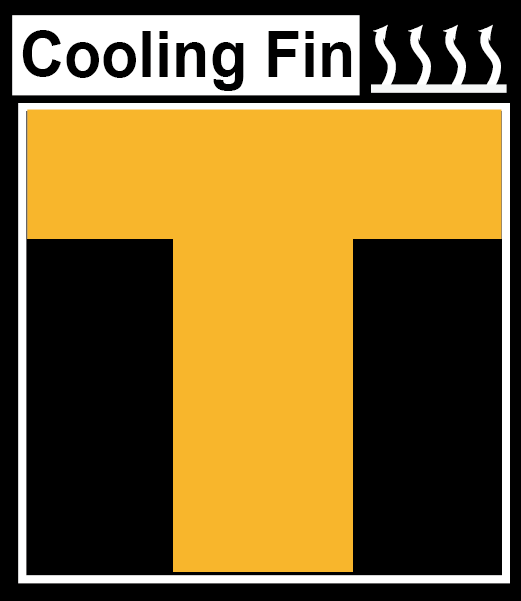
Protection Functions
-
Li-battery protection: The module employs a dedicated Li-battery protection chip to improve the life-span and safety of the battery. When the battery voltage exceeds 4.3V, the chip shut down the charge path to prevent it from further being charged (but still allow discharging). When the battery voltage drops below 2.4V, the output of the battery is shut down to prevent it from further being discharged. It is likely to cause permanent damage to the “fragile” battery, if it is extremely over discharge or charge. Most of the battery charger can prevent over charge by internally setting the cut off charge voltage to 4.2V for Li battery, but the over discharge situation can only be guaranteed by the battery protection IC packed inside the battery or on the power management module like this one. It is recommended to charge the battery if the OUT2 output LED ON2 is darkening or the battery voltage dropping close to 3V. When the discharge current of the battery exceeds 3A, the discharge path of the battery is shut down.
-
Reverse connection protection: On the BAT IN and SOLAR IN, the reverse connection protection circuit prevent the reverse voltage from damaging the module and the corresponding LED will light up to inform the user.
-
Regulated output protection: When the outputs are accidentally shorted, the battery protection chip will quickly shut down the battery discharge path due to large current inrush. Under such situation, all the regulated outputs are shut down. For the over current protection, different regulated outputs acts differently. For OUT2, when the output current exceed 1.1A, the output will be shut down. For OUT1 and OUT3, when the output current exceed the nominal value, the output will NOT be shut down. However, this will cause the temperature of the chips rise quickly triggering the over-temperature protection insides these chips, which results in limiting the output current protecting the circuit.
Attention
Every time reconnect the battery or the battery protection IC cut off charge/discharge due to protection actions, press the BOOT bottom for once or use the USB IN/SOLAR IN to charge the battery to activate the protection IC.
Applications
Use AC adapter to charge Li battery
Utilize the SOLAR IN connector, it is possible to charge the Li battery with common AC adapter within 7V~30V with maximum 2A charge current. Connect the output of the AC adapter (9V or 12V for example) to the DC end of the Female DC power jack adapter (included in the kit) and wire the SOLAR IN to the terminal end of the adapter (as shown followed). Switch the last bit (label “OFF” No. 1) to ON and remain the other bits at OFF.
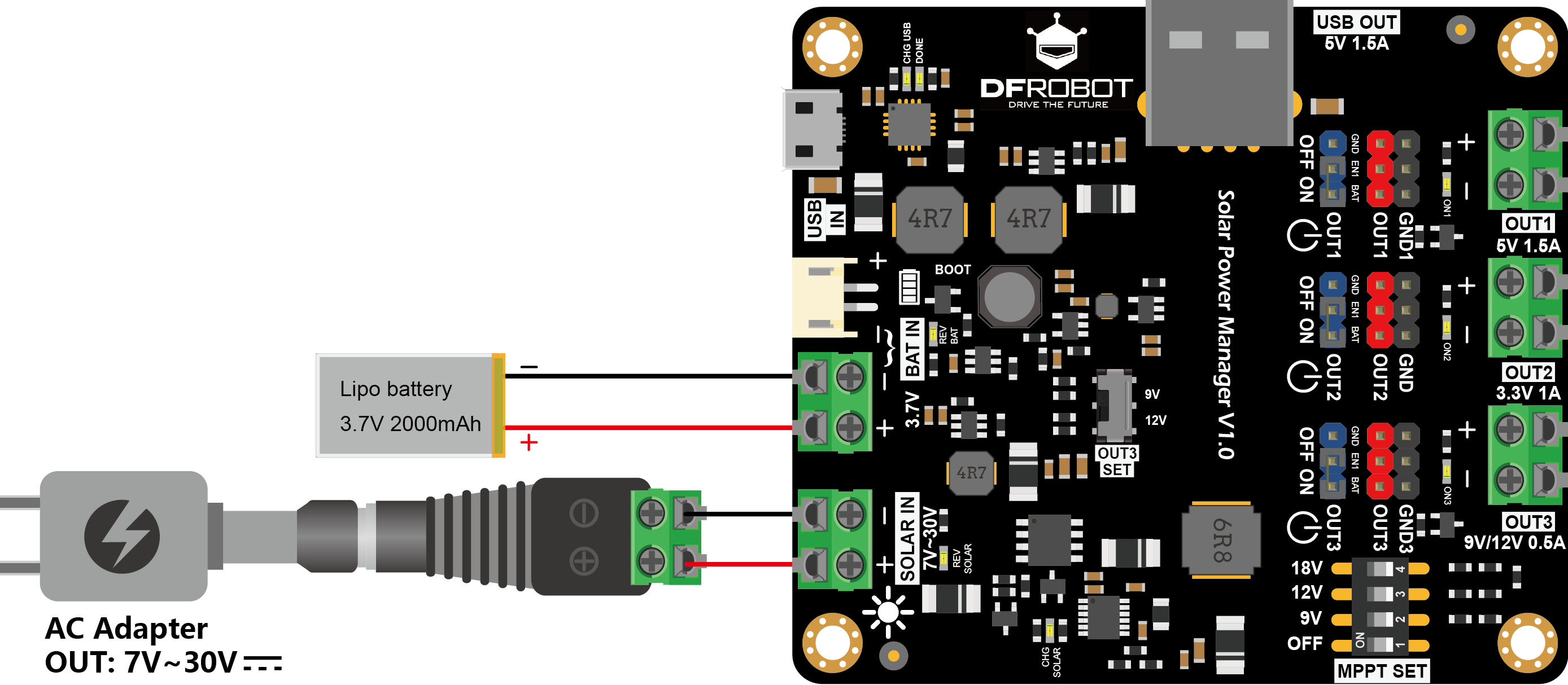
Use the USB to charge battery
Ultilize the USB charge function, the user can build a USB/solar power bank for outdoor sport application. Charge the battery with solar panel by daytime and USB at night with cell phone charger (if it is available). User can also charge small charge current, low power devices, such as smart band or Bluetooth headset with the USB OUT.
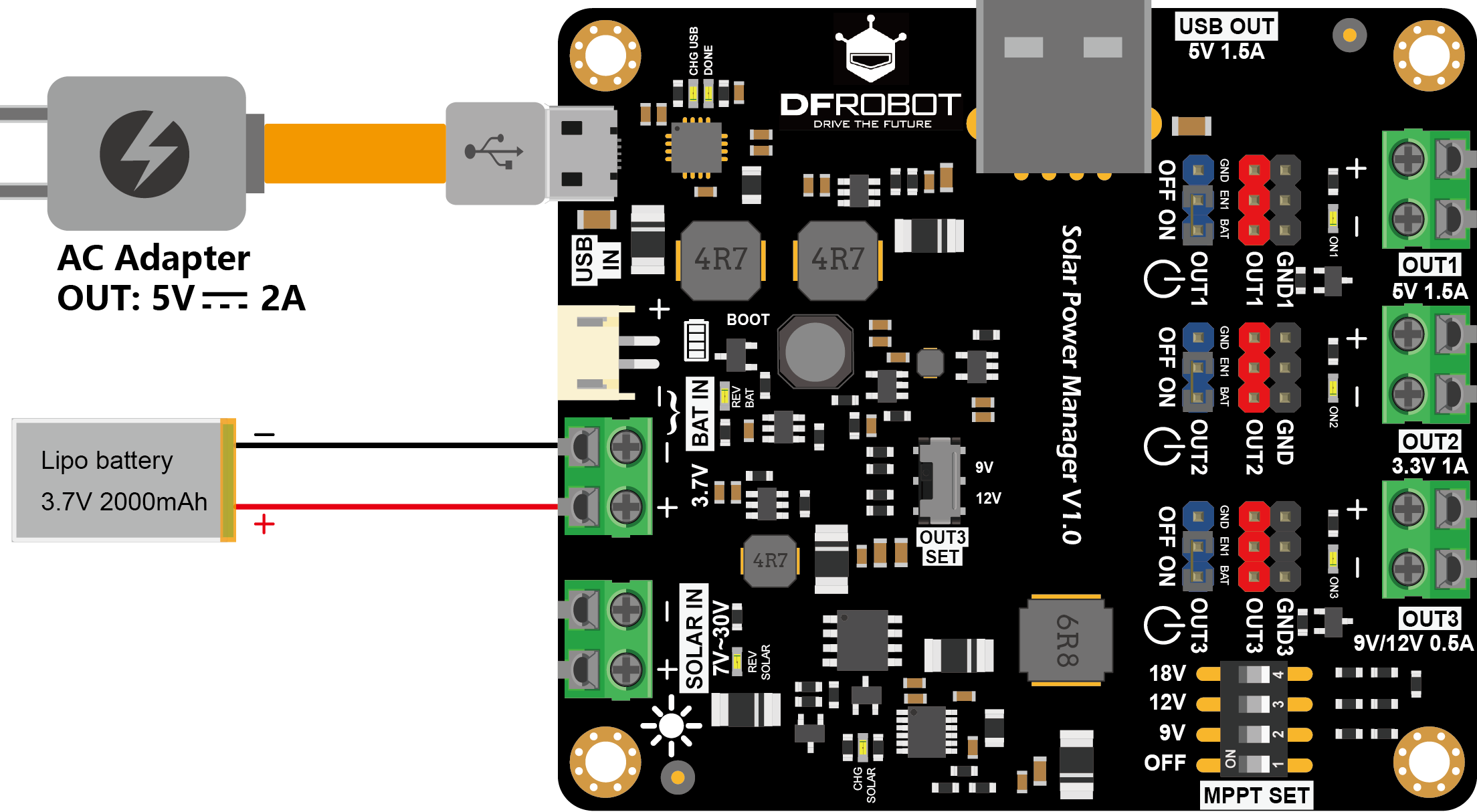
Build a low power environment monitor station
This application example use the BME280 environmental sensor to record temperature, humidity and atmospheric pressure, VEML7700 ambient light sensor to record the the ambient illumination, and DS1307 RTC module to record time. Use the analog input A1 to monitor the battery voltage (equivalently the battery capacity). To achieve lower power consumption, use one Arduino digital IO pin to turn ON the OUT1 power supply, read all the data from the sensors and turn them OFF. Cycle this pattern for a proper interval T to reduce the average power consumption. This can completely get rid of the quiescent power of the peripheral modules. Although single peripheral may consume little power, it can be considerable large for a number of them. This module provides users with effective methods to drive the peripheral modules into discontinuous (pulse) mode to achieve low power operation.
.png)
FAQ
-
Q1. Can I connect two battery to each of the BAT IN connectors?
A. Yes. But pay attention that these two batteries are in direct parallel connection. It is required that these two batteries are of the same (or near) specifications. The two connectors are designed to be compatible with more battery interfaces. Usually, pick one to connect a single Li battery.
-
Q2. Why the regulated outputs automatically shut down while all the outputs are still within the nominal value?
A. The maximum output power of OUT1/USB OUT, OUT2 and OUT3 are 5V*1.5A+3.3V*1A+12V*0.5A=16.8W. If the module is only power by the battery, the maximum output power is determined by the battery 3A over current threshold. Take the battery voltage as 3.7V and an average 85% efficiency. The maximum output power of the module will not exceed 3.7V*3A*85%=9.4W (when the battery is fully charged, the battery voltage can reach 4.2V, max output power turns out to be 10.7W) . When total the output power exceed this value (though OUT1-OUT3 are still within their nominal value), the battery protection IC will take it as over current error and cut off the connection between battery and the regulated outputs. To push the regulated outputs to its limit, use the USB or SOLAR IN to externally power the module.
-
Q3. In MPPT SET, I can't find a suitable voltage for my solar panel. What can I do?
A. Two solutions are available:
- Shut down the MPPT function: Turn the last bit of the MPPT SET to ON to shut down MPPT function.
- Choose a similar MPPT voltage: Over a relative wide range at the vicinity of MPP point VMP, the output power can still keep a high level. The MPPT voltage setting can be not so accurate. Use a MPPT SET voltage close but not larger than the nominal (maximum power) voltage, i.e. for solar panel (norminal voltage) within 9V~11.9V, use the 9V MPPT SET bit. For 12V-16.9V solar panel, use the 12V MPPT SET bit. For 17V-24V solar panel, use the 18V MPPT SET bit.
-
Q4. Can I charge the battery while using the regulated outputs?
A. Yes.
For more questions, advice or cool ideas to share, please visit the DFRobot Forum.
